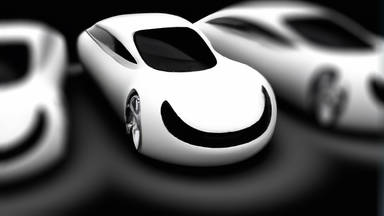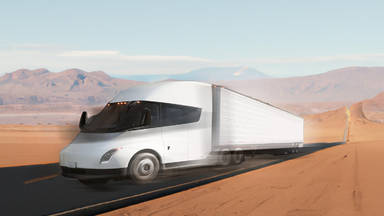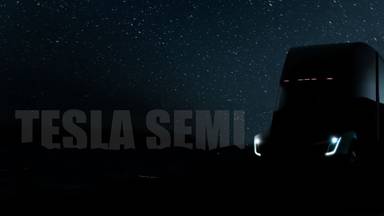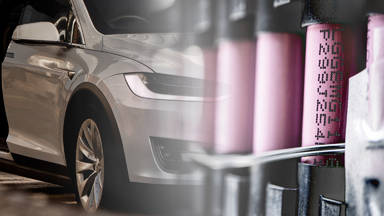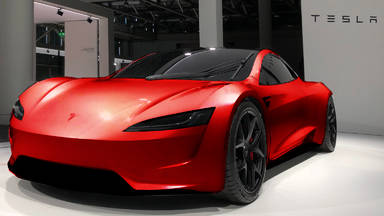
In the near future, a Tesla car might go from zero to 100 kilometers in two seconds flat, have a total range of one thousand kilometers, and still be 25% lighter than any other vehicle on the market. This is all due to the new major breakthrough in battery technology, what scientists call massless batteries. A technology that just recently had a promising improvement only 14 years after it was first tested out and in a couple of years it might become the holy grail of all-electric vehicles especially aerial ones.
But why is it revolutionary?
A huge part of electric vehicles is designed to bear large and heavy loads of batteries that power the vehicle and its electronics. In the case of a Tesla Model 3, 25% of the car’s weight is just the batteries. Hence the structure around it has to be designed specifically for this. Not only do you have to have room for them, but the suspension, brakes, chassis, among other components, all have to be designed to work with the load. Not just when moving, but in extreme decelerations like accidents.
Back in 2007, the US army decided to explore the idea of making the battery part of the structure of vehicles under the code name of SMASIS: Smart Materials, Adaptative Structures, and Intelligence Systems. As it turned out, although the idea is quite straightforward and promising, things were limited by what has plagued the industry for years.
In the beginning installation and lack of solid-state electrolyte technology was the main issue. Carbon fiber, the first composite used, offered poor insulation. Meaning that Lithium-ions had a hard time allocating themselves onto the fiber.
Next, we have the problem with solid-state electrolytes. Since none was available, Gel was used instead. But it had a negative effect on the tensile modulus. The final result of the army’s research was either a battery with really low-specific energy (5 Watt-hour per Kilogram) but super-strong (30 gigapascals), or high-specific energy (35 Watt-hour per Kilogram), but structurally weak (3 gigapascals).
Conventional batteries are usually divided into three main parts. The casing, Insulation, and Electrode. A Lithium-ion electrode sheet is usually around 80 centimeters in length, with a thickness of 300 microns. Using its usual height of 6 centimeters, the total area of the electrode comes out at 480 centimeters squared.
The problem with these batteries is that the electrode film is flimsy and without the casing, they have no structural support. What a messless battery achieves is that it uses a structure such as carbon fiber as the scaffold for the battery, eliminating the need for the casing. The fibers of the carbon fiber become the host for lithium as the negative electrode. For the positive electrode, aluminum is used which also gives structural support, while an electrolyte polymer is used to facilitate the exchange of ions.
So you end up with a structure that is up to 50 percent lighter than conventional batteries with little need of rare minerals while having an elastic modulus of 25.4 gigapascals an impressive 23.6 Watt-hour per kilogram.
This is 10 times less than the normal battery. Why is it so revolutionary?
The exterior surface of a car is about 10 square meters. As if you could flatten the car you would have about 10 square meters. Now, it is hard to estimate the total area of a chassis in the mainframe of a vehicle, but let us say that the total area available is around 25 square meters. That is enough to house about 520 batteries on a single layer.
The single layer is the keyword here. Because each layer has a thickness of about 500 microns. This would give us enough room to stack more layers on top of each other. What it means is that if we stack up to thin layers amounting to five millimeters, we now have 5200 batteries. That is more than the number of batteries of the Tesla Model 3 long-range, except that it is 25 to 50 percent lighter.
Of course, you still have a 10th of the total energy available, but two years ago the specific energy for this technology was only 11.6 Watt-hours per kilogram and in the next couple of years it is expected to reach 75 Watt-hour per kilogram with an Elastic Modulus of 75 gigapascals, making these batteries as strong as aluminum, However, with a relatively lower mass.
And this is just the beginning of the revolution. Aerial vehicles will greatly benefit from this. For argument’s sake, let us just assume that a single layer of a structural battery contains the same specific energy as conventional ones, at 250 Watt-hour per kilogram. A CESSNA 172R can hold up to 208 liters of Avgas (an aviation fuel used in aircraft), with a flight range of 1289 kilometers. This is possible because gasoline has a specific energy of 12,222 Watt-hour per kilogram, which when compared to batteries at 250, gives us an idea of how much it needs to catch up.
Batteries are so limited in this aspect that to achieve the same travel distance, while one tank of gasoline weighs 155 kilograms, you will need three tons of batteries. Because of this, at the moment the max distance electric airplanes can travel is less than 200 kilometers. However, this problem can easily be solved with this new technology.
The total wing-fuselage area of a CESSNA 172R is about 32.8 square meters. That means that just the wings could carry 683 batteries on a single layer. Estimating all additional fuselage area, and we would get about 46 square meters amounting to a total of 956 battery equivalent. Add a few more layers, like 9 for instance, totaling 10, and we are now talking about almost 10,000 batteries, of which 7000 are located just at the wings. The total specific energy would be 102 kiloWatt-hour.
Let us not forget that since the structural batteries should be as strong as aluminum, but lighter, that means that more layers could be added to the fuselage. Assuming 50% lighter, as much as 10 extra layers could be added, giving us 200 kiloWatt-hour or a total travel range of 340 kilometers.
Being hyper optimistic, we could be looking at batteries reaching 500 Watt-hour per kilogram if not more. Considering that, we are talking about the 680-kilometer range on a single charge. Now you understand why this technology can be so revolutionary. The coolest thing about all of this is that it might be available by the end of the decade.
